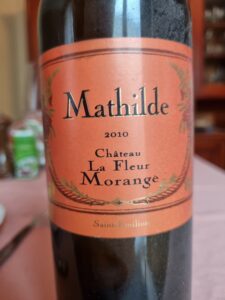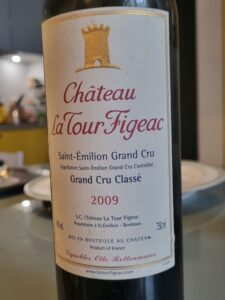
A little knowledge is a dangerous thing… Here I was thinking that I was pretty clued-in to the wines of Bordeaux, especially the great growths, and then the following happened.
I was particularly interested in getting to know unfamiliar (to me) estates included for the first time in the 2012 Saint Emilion classification. So, I snapped up a bottle of 2010 Château La Fleur Morange, Cuvée Mathilde. Here I was thinking that I would discover a newcomer and broaden my knowledge. But no, Cuvée Mathilde is something different from the real Mc Coy and I ending up feeling as though I’d been had…
Let me explain.
Named after the owners’ daughter, about 10,000 bottles of Cuvée Mathilde are produced a year. The classified growth (i.e. without any mention of a cuvée), produces half as much… and costs more than twice as much. Most second wine labels make a discreet allusion to the grand vin rather than misleading consumers, as this was the case here, into believing they were buying a cru classé.
Buyer beware!
What of the wine? I wish I could be more positive. A 13 year-old wine from a great year, it should really have been better. The color was about right for its age. Despite 15° alcohol, the nose was gentle and sweet with hints of dark chocolate and anise with some underlying spice.
However, the wine fell down on the palate, which showed too much oak and the decided presence of alcohol, accompanied by a dry finish. I do not think that ageing will even things out.
While I may give “Cuvée Mathilde” a pass next time around, I am still intrigued about how the cru classé tastes in recent vintages.

I posted a profile of Château La Tour Figeac last year:
https://bordeauxwineblog.com/chateau-la-tour-figeac-a-great-st-emilion-cru-classe/
Seeing as I happened to have a bottle of the 2009 in my cellar, I decided to open this for lunch on Christmas day, to accompany a roast leg of baby lamb from the Pyrenees.
I decanted the wine three hours before the meal and was richly rewarded with something wonderful.
The nose was subtle and extremely attractive even if, curiously, thanks to its hints of graphite, I think it could easily be mistaken for a fine Northern Médoc. There was no question, however, that this was an upper tier Right Bank wine on the palate. The attack was soft, enveloping, and voluptuous, and went on seamlessly to show the backbone Bordeaux is famous for, but without any harshness or austerity. I like this wine so much, I figure that it could easily hold its own with the Premier Crus Classés in this vintage. A really positive experience and a great pleasure.
